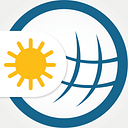Derechos, and why you should know what they are
In meteorology, we are all familiar with the destructive force of hurricanes, tornados, and flooding. But, have you ever heard of a derecho?
Derechos are widespread, long-lived, straight-line wind storms associated with a fast-moving group of thunderstorms. They are particularly hazardous since they tend to be much stronger than your average thunderstorm, producing whipping, hurricane-force winds, giant hail, and sideways pelting rain.
According to the National Weather Service, the costliest thunderstorm in history was a derecho event that resulted in $11 billion in damages to homes, businesses, and agriculture across eastern Iowa and northwest Illinois on August 10, 2020. Post-event surveys estimated widespread straight-line winds up to 140 mph, which resulted in severe damage, particularly in Cedar Rapids, Iowa.
Derecho formation:
Derecho formation is most favorable in a warm and humid environment of moderately strong instability and strong vertical wind shear — conditions that are most likely between April and August.
Geographically, derechos are most common across the Midwest and from Oklahoma across the Ohio Valley; however, occasionally, they can occur outside of this area. One such event occurred on June 6, 2020, which affected Nevada, Utah, and Wyoming.
During the hottest months of the year, warm and muggy air can extend to the north-central U.S., allowing derechos to develop well north of the Canada–U.S. border.
Predicting derechos:
Due to a derecho's potentially catastrophic consequences, it is vital to forecast the phenomena promptly so people in the line of danger can prepare. The process of forecasting derechos boils down to the use of weather models to understand whether the future environmental conditions, such as instability and strong vertical wind shear, are ripe for derecho formation.
If there is enough conviction that these conditions will be met, then several high-resolution weather models, which are purposely designed to simulate thunderstorm intensity and track, are compared. The higher the number of weather models that agree on derecho formation, the higher the confidence in the forecast and thus the more likely a severe thunderstorm warning will be issued by the National Weather Service.
Of course, several factors can complicate the forecast. One is that meteorologists often have to work with usually patchy data. Although environmental conditions support derecho formation, thunderstorms often need a trigger factor to get started. These trigger factors can be a pocket of cool air or rising air over a hill. However, detecting small-scale trigger factors and thus, where and when the derecho will form can be difficult without high data coverage.
The second hurdle is the complexity of the storm itself. Derechos are powerful and very large thunderstorms. They can be several hundred miles in diameter and reach up to the lower fringes of the stratosphere. Due to their massive size, they can influence the atmosphere around them, sometimes favoring their continual growth, maturation, or even demise.
In a perfect world, meteorologists would have access to full-atmosphere snapshots of the environmental changes within and along the storm's periphery to perfectly predict the derecho's evolution. Unfortunately, however, this data is even more sparse than surface observations.
Stay informed
If you want to stay informed of incoming severe thunderstorms, including derechos, use active storm alerts on your Weather & Radar app. First, go to the Setting Menu by tapping on the top left icon on your home screen. Then, head down to Weather Alerts and switch the toggle button to activate.
